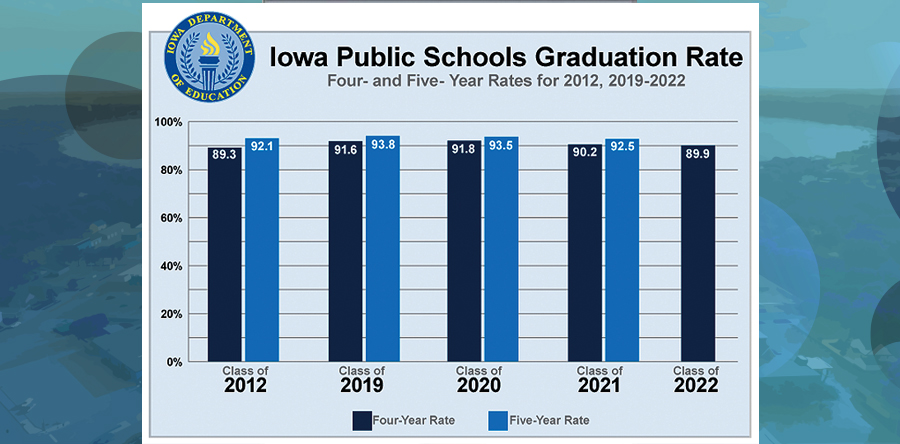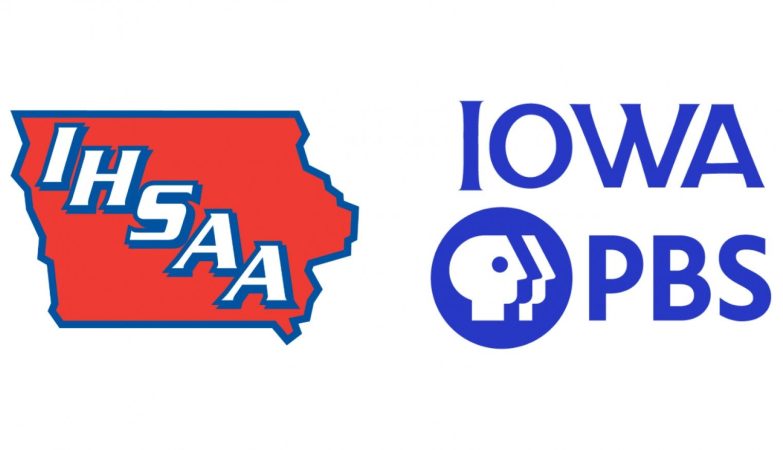Clear Lake numbers fall in line with state averages
Iowa’s high school graduation rate remains high for the graduating class of 2022, the second full year following the pandemic, according to figures released this week by the Iowa Department of Education.
State data show 89.9 percent of students in Iowa’s Class of 2022 graduated within four years, which is only a slight decrease from 90.2 percent for the Class of 2021. Following several years of steady progress prior to the onset of the pandemic, Iowa’s four-year graduation rate for the graduating class of 2022 is still 0.6 percentage points above where it was 10 years ago.
The Clear Lake School District mirrored the State’s average, with a graduation rate of 89.8 in 2022. That rate marked a three-year decline in the local graduation rate. After posting a graduation rate of 93.64 in 2018, the district saw improvement in 2019 with a rate of 96.59 percent of seniors graduating. The following two years Clear Lake experienced slight decreases. In 2020 the graduation rate was 95.8 and in 2021 it was 94.5.
Neighboring North Iowa districts generally fell very near or below the State’s 89.9 average in 2022.
Averages for districts surround-ing the Clear Lake area in 2022 were: Central Springs (92.9), Clarion-Goldfield-Dows (91.8), Forest City (87.3), Hampton-Dumont (81.9), Lake Mills (90.9), Mason City (81.6), West Fork (85.5).
Garner-Hayfield-Ventura and Northwood-Kensett were the exception to lower numbers. GHV had a graduation rate of 98.5 in 2022, 100 percent graduation in 2021 and 95.4 in 2020. Northwood-Kensett reported 100 percent in 2021 and 2022. In 2020 N-K’s rate was 97.3.
Rates for the schools in 2021 and 2020 were as follows: Mason City (85.4, 83.3), Forest City (90.4, 94.8), West Fork (90.4, 95.4), Hampton-Dumont (87.9, 92.6), Clarion-Goldfield-Dows (97.0, 86.7).
Despite the state’s small drop, Iowa’s graduation rate is higher than its neighboring states. Illinois, Missouri, Nebraska and South Dakota all recently reported graduation rates below Iowa’s, ranging from 82.2 to 89.7 percent. 2022 graduation rates for Minnesota and Wisconsin are not yet available.
“Students in the graduating class of 2022 were in 10th grade when the pandemic forced us to close schools in the spring of 2020,” said Ann Lebo, director of the Iowa Department of Education. “Students transitioned between learning models while facing a multitude of challenges during their junior year. But I have learned that students are resilient. As we move forward, we must continue to work with our school partners to ensure all students have the support and resources needed to succeed.”
Iowa received nearly $775 million in 2021 through a third round of federal relief funding for Pre-K-12 schools to address a variety of pandemic-related expenses and strategies. At least 20 percent of the American Rescue Plan Elementary and Secondary School Emergency Relief (ESSER III) funds available to school districts must be used to address disruptions to learning caused by the pandemic. Districts have until September 2024 to expend the funds.
Iowa graduation rates are calculated with a formula established by the U.S. Department of Education. Unique student identification numbers allow school districts to account for all ninth-grade students as they move through high school. At the state level, the method helps determine when a student graduates, even if the student has switched districts during high school.
Iowa’s five-year graduation rate — which reflects students who were part of a graduating class but took an extra year to finish high school — was 92.5 percent for the Class of 2021, down slightly from 93.5 percent for the Class of 2020.
Iowa’s annual dropout rate reflects the percent of students in grades 9-12 who dropped out of school during a single year. The annual dropout rate was 3.04 percent for the 2021-22 school year. The state’s 2021-22 dropout rate represents 4,698 students in grades 9 through 12.
Clear Lake reported 11 dropouts (grades 7-12) for a rate of 1.72 in 2021-22.
More information on Iowa’s graduation rates and dropout rates, including rates by school district and student group, are available on the Department of Education’s Graduation Rates and Dropout Rates webpage.





